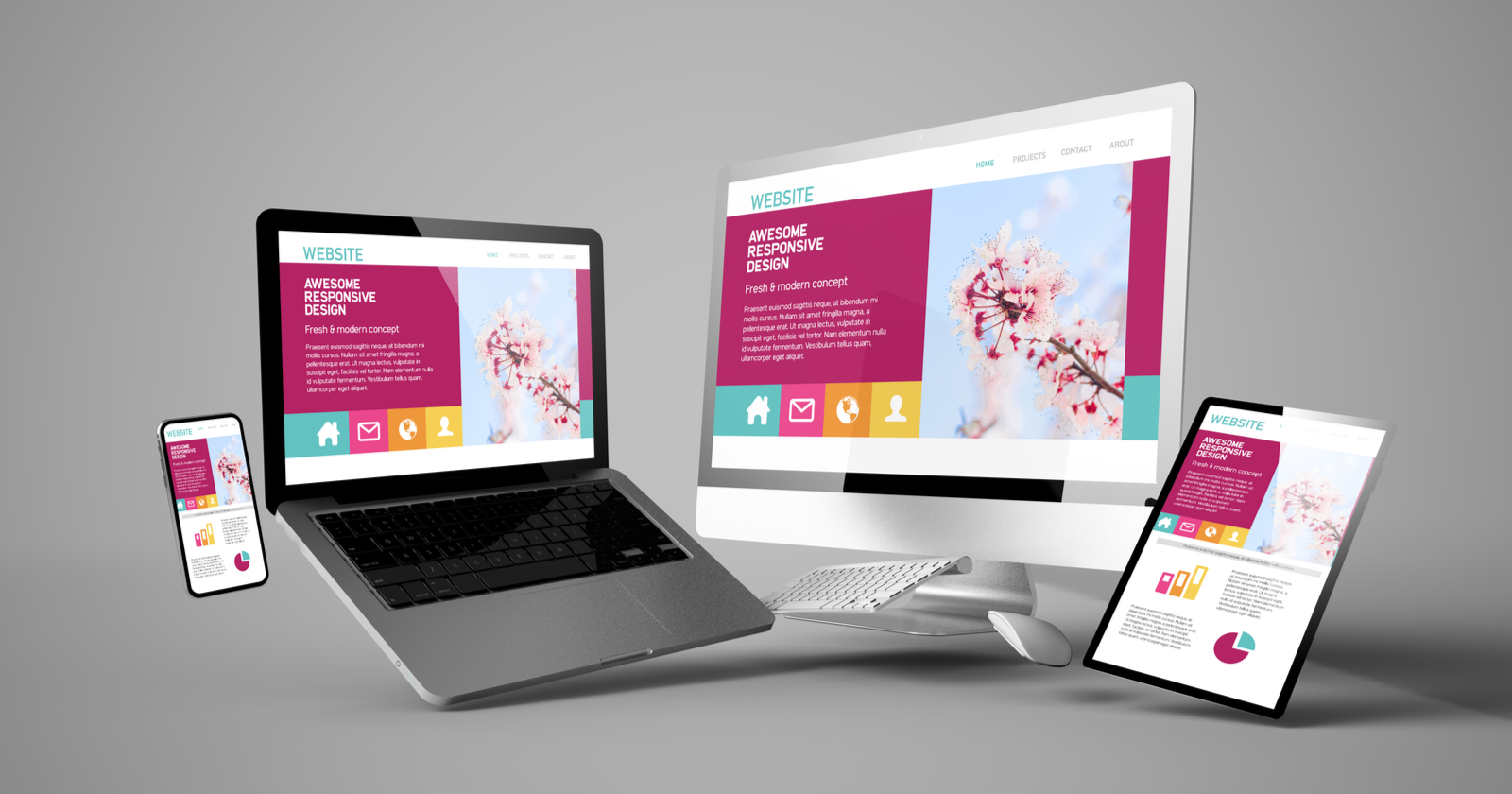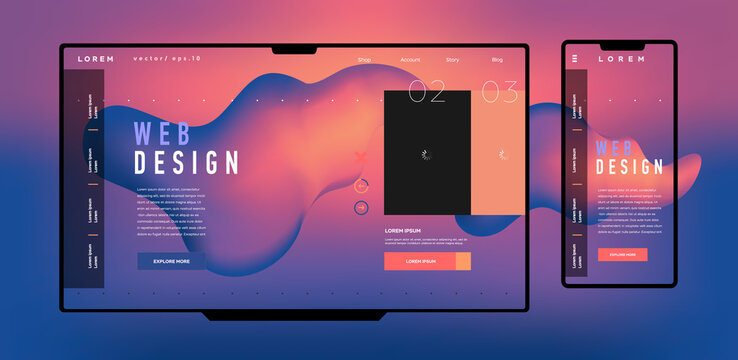Just How to Efficiently Incorporate Aesthetic Appeals and Functionality in Internet Layout
When creating a web site, you need to strike a balance between appearances and capability. It's not practically looking excellent; your design must likewise serve a function and overview customers efficiently. By focusing on simpleness and user-friendly navigation, you can create an interesting experience. What aspects genuinely enhance usability while keeping visual allure? Let's explore the essential concepts that can bring about an unified mix of appeal and feature.
Recognizing the Significance of Looks and Performance
Recognizing the equilibrium in between visual appeals and capability is crucial for developing an effective individual experience when you develop a website. A visually attractive site grabs interest, however it's the capability that maintains users engaged. Visitors will rapidly shed rate of interest and leave.Consider your target audience and what draws them in if your site looks terrific but is tough to browse. You desire to create a design that mirrors your brand name while making certain simplicity of use. Structured layouts, user-friendly navigating, and clear contact us to action can boost both aesthetic appeals and functionality.

Principles of Efficient Web Design
To create an efficient web design, you require to stick to a number of vital principles that boost both customer experience and visual charm. Focus on simpleness; a tidy layout assists customers navigate conveniently. Make use of a consistent color design and typography to maintain coherence across your site. This promotes knowledge and trust.Next, ensure your layout is responsive. Customers access websites on different devices, so your layout needs to adjust flawlessly. Take note of aesthetic hierarchy; emphasize crucial components with shade, size, or positioning to assist individuals' focus.Finally, integrate sufficient white area. It prevents mess and makes material a lot more absorbable. Bear in mind, effective website design equilibriums aesthetics and performance, so every design selection ought to serve an objective. By complying with these principles, you'll create a site that's not only visually attractive however additionally user-friendly, ultimately maintaining visitors involved and urging them to return.
Prioritizing Customer Experience
When prioritizing customer experience, you'll wish to begin by understanding what your customers genuinely require. Simplifying navigation style can make a massive distinction in just how quickly they locate what they're searching for. Also, enhancing aesthetic power structure aids assist their interest to the most important components on your website.
Understanding User Demands
Recognizing user needs is essential for producing an appealing web experience that keeps visitors returning. To achieve this, you must identify the objectives and choices of your target audience. Beginning by conducting customer research study, like surveys or interviews, to gather understandings on what users value most. Take notice of their discomfort factors and challenges when engaging with similar sites. This info permits you to customize your layout, making sure capability lines up with individual assumptions. In addition, consider producing individual characters that stand for different segments of your audience, assisting you visualize their demands throughout the layout process. When you prioritize recognizing user needs, you produce a site that not just looks wonderful but also delivers a smooth, delightful experience that fosters commitment.
Streamlining Navigating Design

Enhancing Visual Hierarchy
A strong visual pecking order is crucial in directing customers through your site and guaranteeing they involve with essential web content. To accomplish this, use spacing, dimension, and shade strategically. Make vital elements like headings bigger and bolder than body message, attracting interest immediately. Utilize contrasting shades to highlight phone call to action, urging clicks. Additionally, utilize sufficient white space to separate sections, making material digestible and inviting.Consider the circulation of info; set up elements rationally, leading users' eyes from one point to the next. Usage visual signs, like lines or arrowheads, to route attention. By focusing on aesthetic power structure, you enhance user experience and raise the probability of conversions, guaranteeing your web site is both visually pleasing and functionally efficient.
Shade Concept and Its Effect on Use
While selecting the right colors for your website might feel like a minor detail, it substantially influences use and user experience. Color influences exactly how individuals view info and can improve or impede navigation. As an example, contrasting shades can assist essential elements attract attention, making it simpler for site visitors to locate what they need.Additionally, think about the psychology of colors: blue commonly inspires count on, while red develops urgency. Understanding your target market can assist your color selections, ensuring they reverberate well.Moreover, consistent color schemes assist develop brand identification, making your website more remarkable. However, be careful-- way too many shades can overwhelm individuals. Adhere to a limited scheme that matches your web content and keeps clarity.Incorporating availability is also essential; confirm site web your color combinations get along for those with aesthetic problems. By thoughtfully applying color concept, you'll enhance usability and create an extra interesting individual experience.
Typography: Balancing Design and Readability
Color choices set the stage for your internet site, however typography plays an equally important role in enhancing customer experience. You want your message to communicate clearly while likewise mirroring your brand name's character. Start by choosing typefaces that are not just attractive yet likewise legible. Sans-serif fonts commonly work well for digital displays, as they're much easier to review at various sizes.Maintain a power structure by using various typeface sizes and weights; this guides customers with your material easily. Think about line spacing and letter spacing; also limited can frustrate visitors, while also loose can disrupt the circulation. Restriction your font selections to two or three to maintain the design cohesive.Finally, always examine your typography throughout various tools and browsers. What looks good on one screen might not on another. Stabilizing design with readability guarantees that your message reverberates, maintaining your audience involved and notified.
Receptive Style: Making Visual Appeals Work With All Devices
To assure your website looks terrific on any type of device, you'll need to embrace receptive style principles. This technique assurances your website adapts to different screen sizes, offering a suitable customer experience. Beginning by utilizing liquid grids and versatile photos that scale perfectly. Rather than dealt with dimensions, select percents and relative systems, allowing your layout to adjust dynamically.Next, apply media questions in your CSS. These directory allow you use various designs based on gadget qualities, like screen size. By doing this, you can keep visual appeal while guaranteeing functionality.Don' t ignore touch targets; ensure buttons and web links are easy to tap on smaller screens. Prioritize important web content, so customers can quickly navigate your website no matter their tool. By concentrating on these components, you'll create an interesting, aesthetically appealing experience that satisfies the needs of all customers, whether they get on a smart device, tablet computer, or desktop computer .
Conducting Usability Testing for Continual Improvement
To enhance your website design, you require to establish clear functionality objectives that straighten with customer requirements. By performing individual examinations, you can collect important feedback on exactly how actual people engage with your site. Analyzing these outcomes will help you make informed renovations and develop an extra efficient customer experience.
Specifying Functionality Goals
While visual appeals can draw individuals in, specifying usability goals is important for ensuring their experience remains satisfying and smooth. Begin by determining what you desire individuals to attain on your site (website design london Ontario). Consider their jobs, demands, and habits. Are they looking for information, buying, or registering for a newsletter? Establish clear standards to gauge success, like task conclusion prices or time on job. Prioritize instinctive navigating, easily accessible content, and receptive design to boost functionality. Regularly review these objectives as individual assumptions evolve. By defining use objectives, you produce a structure for reviewing and enhancing your site's efficiency. This concentrate on use not only enhances individual contentment yet also enhances the overall effectiveness of your design
Conducting Individual Examinations
Carrying out individual tests is necessary for improving your site and guaranteeing it fulfills your target market's needs. Start by determining your target individuals and creating an examination strategy that describes your purposes. Utilize a mix of quantitative and qualitative techniques, such as surveys, interviews, and task-based observations, to gather detailed comments. Welcome individuals to browse your site while you observe their interactions and keep in mind any type of problems they experience. Motivate open dialogue to catch their ideas and sensations about the design and functionality. Keep sessions brief and concentrated, ensuring you cover crucial locations without frustrating customers. Make certain to record all searchings for, as this info will be invaluable for making informed design choices that improve both appearances and functionality.
Assessing Examination Results
Just how can you properly assess the outcomes of your functionality examinations to drive continuous renovation? Beginning by classifying feedback into usual styles. Try to find patterns in individual behavior that highlight pain points or areas for improvement. Usage measurable information, like task completion rates and time on job, to gauge usability objectively. Don't forget to think about qualitative understandings from user remarks; they often expose underlying concerns that numbers can't show. Prioritize the most impactful searchings for and produce actionable products for your design team. Bear in mind, it has to do with iterating-- carry out changes, after that test once again. This cycle of testing, analyzing, and refining helps you equilibrium aesthetic appeals and functionality, ensuring your site satisfies user demands successfully while keeping visual appeal.
Frequently Asked Questions
Exactly how Do I Select the Right Color Combination for My Website?
To choose the ideal color combination for your website, consider your brand name's character, target audience, and psychological effect (website design london Ontario). Usage color psychology, develop consistency, and warranty readability. Examination mixes to see what resonates finest with site visitors
What Equipment Can Aid With Web Style Aesthetic Appeals and Functionality?
You can use tools like Adobe XD, Figma, and Sketch to enhance your web style's aesthetic appeals and performance. These systems offer instinctive user interfaces, collaboration features, and pre-made design templates to streamline your imaginative process and improve your styles.
Exactly How Can I Incorporate Animations Without Jeopardizing Functionality?
To incorporate animations without compromising performance, focus on refined results that boost customer experience. Usage CSS animations for smoother communications, guarantee quick lots times, and examination on numerous devices to preserve performance while including aesthetic appeal.
What Prevail Blunders to Prevent in Internet Style Appearances?
When developing, avoid messy designs, poor shade choices, and inconsistent font styles. Don't overlook mobile responsiveness, as it can push away customers. Verify your design aligns with your brand name, creating a smooth experience that engages visitors properly.
How Frequently Should I Update My Web site's Design for Ideal Aesthetics?
You should update your web site's design every 1-2 years to stay on par with fads and preserve perfect aesthetics. Consistently renewing visuals assists involve guarantees and site visitors your site continues to be appealing and straightforward. When you design an internet site, recognizing the equilibrium in between looks and capability is important for developing a reliable customer experience. To produce a reliable internet design, you require to adhere to a number of crucial concepts that boost both customer experience and visual appeal. Individuals access internet sites on various gadgets, so your layout should adjust perfectly. click here to read When focusing on customer experience, you'll want to begin by recognizing what your individuals absolutely require. Begin by conducting user research study, like meetings or surveys, to gather insights on what individuals worth most.